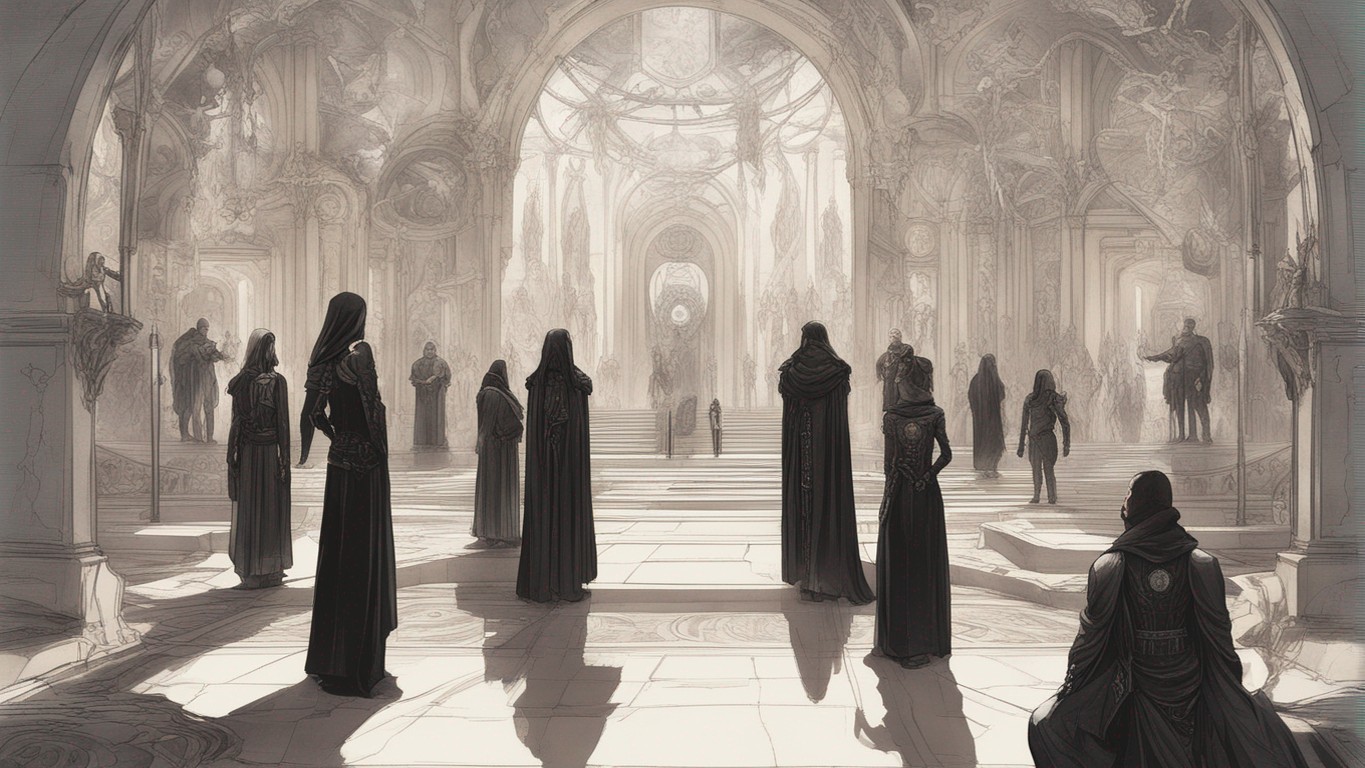Heaven’s Gate was a religious cult founded in the early 1970s by Marshall Applewhite and Bonnie Nettles. They believed that they were the two witnesses described in the Book of Revelation and were sent to Earth to prepare a select group for salvation.
Beliefs
The group’s beliefs were a unique blend of Christian theology, New Age spirituality, and extraterrestrial contact. They believed that the human body was merely a “vehicle” that could be abandoned in favor of a higher spiritual existence. Their ultimate goal was to ascend to what they referred to as the “Next Level” and join an extraterrestrial species that was guiding humanity’s evolution.
Recruitment and Lifestyle
Applewhite and Nettles traveled around the U.S., spreading their message and recruiting followers. They imposed strict rules, including celibacy, and encouraged members to cut ties with family and friends. Members lived communally, pooling resources and adhering to a rigorous routine.
Marshall Applewhite and Bonnie Nettles
Applewhite was a music professor who struggled with his sexuality and mental health. Nettles was a nurse with an interest in astrology and the occult. They met in a psychiatric hospital, where Applewhite was a patient. They quickly bonded over shared spiritual beliefs.
Theology and Beliefs
Heaven’s Gate mixed Christian, occult, and New Age beliefs, seeing themselves as chosen by extraterrestrial beings to ascend to a higher plane. They viewed earthly life as corrupt and believed they could transcend it through spiritual growth and discipline.
Recruitment and Daily Life
The leaders held recruitment events, attracting people seeking spiritual enlightenment. Members were asked to abandon earthly attachments, including possessions and relationships. Their daily life was strictly regimented, with schedules, dress codes, and dietary restrictions.
Mass Suicide
The group saw signs in various cosmic events, believing that a spacecraft was coming to take them to the “Next Level.” The appearance of the Hale-Bopp comet was the final sign. The mass suicide was carefully planned, with members leaving farewell videos expressing contentment with their decision.
Public Reaction and Legacy
The mass suicide drew worldwide attention and condemnation. It spurred debates about cult behavior, brainwashing, and religious freedom. Surviving members continue to maintain the group’s website, while scholars and journalists analyze the group’s beliefs and dynamics.
Applewhite’s Background
Marshall Applewhite’s early life was marked by religious fervor and struggles with his sexuality. He was involved in the Presbyterian Church, but his attraction to men conflicted with his faith. His mental health deteriorated, culminating in his meeting with Nettles.
Nettles’ Background
Bonnie Nettles had an interest in biblical prophecy, astrology, and spiritualism. She believed she had a special mission and was guided by extraterrestrial beings. Her partnership with Applewhite became the foundation of Heaven’s Gate.
Psychological Dynamics
The group’s appeal can be understood through psychological principles such as charismatic leadership, social isolation, cognitive dissonance, and groupthink. Members were gradually indoctrinated, with dissent discouraged and conformity rewarded.
Law Enforcement and Media Reaction
The law enforcement response to the suicides was marked by shock and confusion. The media coverage was intense, focusing on the group’s bizarre beliefs and rituals. Some criticized the sensationalism, while others saw it as a cautionary tale.
The Hale-Bopp Comet and Mass Suicide
The group gained worldwide notoriety in 1997 when 39 members, including Applewhite, participated in a mass suicide. They believed that the arrival of the Hale-Bopp comet signaled the time to leave Earth and join the extraterrestrial beings in a spacecraft hiding behind the comet.
The members consumed a lethal cocktail of phenobarbital mixed with applesauce, washed down with vodka, and placed plastic bags over their heads. They were found dressed identically, each with a $5 bill and three quarters in their pockets.
Heaven’s Gate Mansion
The Heaven’s Gate cult’s mansion was located in Rancho Santa Fe, California. It served as the headquarters for the group and was the site of the mass suicide in 1997.
Purchase and Features
The mansion was purchased in 1996 and was an impressive estate. The property had a sprawling 9,000 square feet of living space and was situated on a 3.11-acre lot. Inside, there were nine bedrooms and seven bathrooms. The decor was simple, with an emphasis on uniformity, reflecting the group’s communal lifestyle and disciplined approach.
Daily Life
Life in the mansion was highly structured. Members followed strict schedules that included chores, meditations, group meetings, and meal preparation. They adhered to a uniform appearance, wearing identical clothing and even sporting similar haircuts.
The Final Act
The mass suicide took place within the mansion over a period of three days. The members took turns ingesting the lethal cocktail and were found lying on their beds, covered with a purple shroud. The scene was discovered by a former member who received a farewell videotape and a letter explaining their decision.
Aftermath
The mansion became a symbol of the tragic event and a focal point for media attention. People flocked to the site, some out of curiosity, others to pay respects. The property was eventually sold, and the mansion itself was demolished in 2003. The land has since been developed into new homes.
Legacy
The Heaven’s Gate Mansion remains an infamous landmark, a chilling testament to the power of belief and the human desire for transcendence. Its story continues to be told in documentaries, books, and articles, serving as a cautionary tale and a subject of fascination for those interested in cults, psychology, and the human condition.
Legacy and Impact
The Heaven’s Gate mass suicide shocked the world and raised serious questions about religious freedom, the power of charismatic leaders, and the psychology of cults. The group’s website is still maintained by surviving members, preserving the teachings and beliefs of the group.
